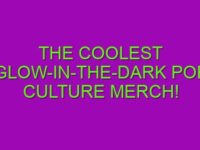-
Table of Contents
The Influence of Garage Rock Revival on Contemporary Music Trends
The Influence of Garage Rock Revival on Contemporary Music Trends
Garage rock revival, a musical movement that emerged in the late 20th century, has had a profound impact on modern culture, particularly in the realm of music. This article will explore the influence of garage rock revival on contemporary music trends, highlighting the ways in which this genre has shaped and transformed the musical landscape.
One of the most significant effects of garage rock revival on modern music is its role in revitalizing the DIY (do-it-yourself) ethos. Garage rock, characterized by its raw and unpolished sound, often recorded in home studios or garages, has inspired countless musicians to take matters into their own hands. This DIY approach has become increasingly prevalent in contemporary music, with artists embracing the freedom and creative control that comes with producing their own music.
Furthermore, garage rock revival has also played a pivotal role in the resurgence of analog recording techniques. In an era dominated by digital technology, the raw and gritty sound of garage rock has reminded musicians of the unique qualities that analog recording can bring to their music. As a result, many artists today are incorporating analog equipment and techniques into their recordings, adding warmth and character to their sound.
In addition to its impact on production techniques, garage rock revival has also influenced the songwriting and lyrical content of contemporary music. The genre’s emphasis on simplicity and authenticity has encouraged musicians to strip away unnecessary layers and focus on creating music that is honest and relatable. This shift towards more straightforward and heartfelt songwriting can be seen across various genres, from indie rock to folk and even pop music.
Moreover, garage rock revival has had a significant influence on the aesthetics and visual presentation of contemporary musicians. The DIY ethos of the genre has extended beyond just the music itself, with artists embracing a lo-fi and DIY aesthetic in their album artwork, music videos, and live performances. This rejection of glossy and polished visuals has resonated with audiences, who are increasingly drawn to the authenticity and rawness that garage rock revival represents.
Furthermore, the influence of garage rock revival can also be seen in the rise of independent and alternative music scenes. The genre’s rejection of mainstream conventions and its focus on individuality and self-expression has inspired a new wave of musicians to pursue their own unique artistic visions. As a result, independent and alternative music scenes have flourished, providing a platform for artists who may not fit into the traditional commercial mold.
In conclusion, the effects of garage rock revival on modern culture, particularly in the realm of music, are undeniable. From revitalizing the DIY ethos to influencing production techniques, songwriting, aesthetics, and the rise of independent music scenes, this genre has left an indelible mark on contemporary music trends. As we continue to see the influence of garage rock revival in the work of emerging artists, it is clear that this movement will continue to shape and transform the musical landscape for years to come.
Exploring the Impact of Garage Rock Revival on Fashion and Style
The garage rock revival of the late 20th century had a profound impact on modern culture, extending beyond just the music scene. One area where this influence is particularly evident is in the realm of fashion and style. The raw, rebellious energy of garage rock translated into a distinct aesthetic that continues to resonate with individuals today.
One of the key elements of garage rock fashion is its DIY ethos. Garage rock bands often started out with limited resources, practicing and performing in their own garages. This resourcefulness translated into their fashion choices, as they embraced a thrift store aesthetic, favoring vintage clothing and repurposed items. This DIY approach to fashion not only reflected the limited means of these musicians but also served as a rejection of mainstream consumerism.
The garage rock revival also brought back a sense of authenticity to fashion. In an era dominated by manufactured pop stars and cookie-cutter styles, garage rock fashion offered a refreshing alternative. The emphasis was on individuality and self-expression, with band members and fans alike embracing a more eclectic and unconventional look. This rejection of conformity resonated with a generation seeking to break free from societal norms and expectations.
Another significant influence of garage rock revival on fashion is the resurgence of vintage and retro styles. Garage rock bands drew inspiration from the music of the 1960s and 1970s, and this influence extended to their fashion choices. Vintage band t-shirts, bell-bottom pants, and psychedelic patterns became staples of the garage rock aesthetic. This revival of retro styles not only paid homage to the past but also introduced a new generation to the fashion of previous decades.
The impact of garage rock revival on fashion and style can also be seen in the rise of the “grunge” aesthetic. Garage rock bands like Nirvana and The Pixies popularized a more disheveled and unkempt look, characterized by ripped jeans, flannel shirts, and messy hair. This anti-fashion statement became a defining feature of the grunge movement, which rejected the polished and glamorous image of mainstream rock stars. The grunge aesthetic resonated with a generation disillusioned by the excesses of the 1980s and sought a more authentic and gritty style.
Furthermore, the garage rock revival influenced the fashion industry itself. Designers and brands began incorporating elements of garage rock fashion into their collections, capitalizing on its rebellious and edgy appeal. The DIY aesthetic, vintage-inspired pieces, and grunge influences became mainstream trends, reaching a wider audience beyond the music scene. This commercialization of garage rock fashion further solidified its impact on modern culture.
In conclusion, the effects of the garage rock revival on modern culture extend beyond the realm of music. The fashion and style associated with this movement have left a lasting impact on society. The DIY ethos, authenticity, vintage revival, and grunge aesthetic have all become influential trends in fashion. The garage rock revival has not only shaped the way we dress but also challenged societal norms and offered a platform for self-expression. Its impact on modern culture is undeniable, and its influence continues to resonate with individuals seeking a rebellious and unique style.
Analyzing the Sociocultural Effects of Garage Rock Revival on Youth Culture
The garage rock revival of the late 20th century had a profound impact on modern culture, particularly on youth culture. This musical movement, characterized by its raw and energetic sound, emerged in the 1980s and gained popularity throughout the 1990s and early 2000s. It was a reaction against the polished and commercialized music of the time, and it resonated with young people who were seeking authenticity and rebellion.
One of the sociocultural effects of the garage rock revival was the resurgence of DIY (do-it-yourself) culture. Garage rock bands often recorded their music in their own garages or basements, using cheap equipment and minimal production. This ethos of self-sufficiency and independence inspired many young people to start their own bands, record their own music, and organize their own shows. The accessibility of technology, such as affordable recording software and social media platforms, further facilitated this DIY movement. As a result, a new wave of independent musicians emerged, challenging the dominance of major record labels and reshaping the music industry.
Moreover, the garage rock revival had a significant impact on fashion and style. The music was closely associated with a retro aesthetic, drawing inspiration from the fashion of the 1960s and 1970s. Bands like The Strokes and The White Stripes popularized a look that was characterized by skinny jeans, vintage t-shirts, leather jackets, and unkempt hair. This style became a symbol of rebellion and nonconformity, and it was embraced by many young people who wanted to distance themselves from mainstream fashion trends. The influence of garage rock fashion can still be seen today, with many contemporary artists and fashion brands incorporating elements of this style into their designs.
Furthermore, the garage rock revival had a profound impact on the way young people consumed and discovered music. Prior to this movement, the music industry was largely controlled by major record labels, who determined which artists received exposure and airplay. However, the rise of the internet and file-sharing platforms allowed garage rock bands to bypass traditional distribution channels and reach a global audience. This democratization of music consumption empowered young people to explore and discover new artists on their own terms, without relying on mainstream media or corporate gatekeepers. It also fostered a sense of community among fans, who could connect with each other and share their favorite music online.
In addition to its influence on fashion and music consumption, the garage rock revival also had a broader impact on youth culture. The music and ethos of this movement resonated with young people who were disillusioned with the mainstream and sought an alternative to the dominant cultural narratives. It provided a sense of belonging and identity for those who felt marginalized or misunderstood. The raw and unpolished sound of garage rock spoke to the frustrations and aspirations of young people, capturing their energy and rebellious spirit.
In conclusion, the garage rock revival of the late 20th century had a profound impact on modern culture, particularly on youth culture. It inspired a DIY movement, reshaped fashion trends, revolutionized music consumption, and provided a sense of identity and belonging for young people. Its influence can still be felt today, as the legacy of garage rock continues to shape and inspire contemporary artists and cultural movements.




















0 Comments